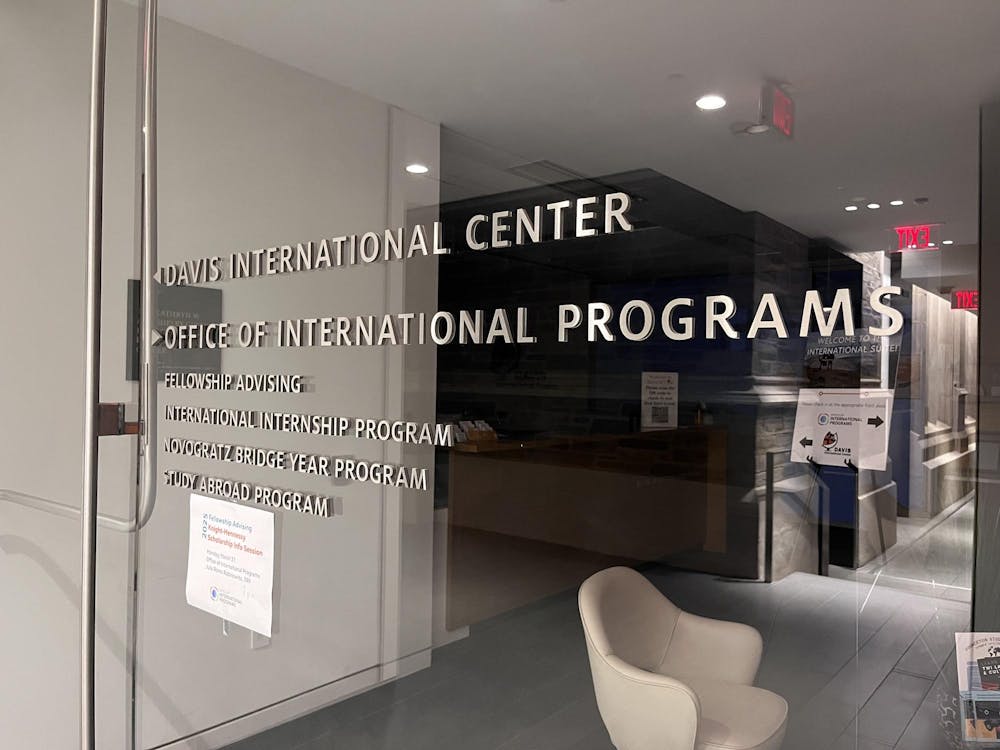The students, led by the People’s Front for the Liberation of Southern Africa, were protesting University holdings in corporations doing business in apartheid South Africa.
Alumni who led, participated in and observed large-scale protest movements during their time at Princeton said their activism enriched their undergraduate experience, especially in the context of a University that does not always have a reputation of being politically active.
Greg Conderacci ’71, a former editor-in-chief for The Daily Princetonian who covered the 1970 campus protests against military force in Cambodia, noted that activism afforded “a different kind of Princeton education.” Activism “connects you to the outside world,” teaching “organizational skills that you’re not going to pick up in sociology class,” he said.
It also taught students that their efforts, and the results of those efforts, were “real,” Conderacci added. “I think it helped bring the war to an end.”
“You don’t find that in the undergraduate curriculum,” he said.
Student unrest during the Vietnam War “reached a crescendo right after Cambodia,” Conderacci noted, referring to the U.S. invasion of Cambodia in 1969. The student response was enormous: In spring 1970, classes were canceled, the University was closed, and student sit-ins and demonstrations were widespread.
“The secret to all activism is a small, dedicated band of radicalizers,” Conderacci said, adding, “They do things that are kind of on the edge, like building takeovers. That gets people’s attention … [and] raises energy all around.”
Eight years after the protest against the invasion of Cambodia, members of the campus community campaigned against the University’s investments in apartheid South Africa. A regular picket line in front of Nassau Hall began in February 1978 and grew “steadily larger” as more and more people joined the cause, Jonathan Fox ’80 said. Fox noted that a “major turning point” in the campaign came on April 4, the anniversary of the assassination of Martin Luther King, Jr., when students staged a demonstration on Cannon Green.

Fox and Larry Hamm ’78, who helped organize the sit-in, both noted that raising awareness about divestment was essential to raising support among the students.
The “educational work and the agitational work were both key factors,” Hamm said, adding that “fine educational pieces” written by students helped “open a lot of people’s eyes who might otherwise have been sitting on the fence or been opposed to what we were doing.”
The divestment campaign did not achieve all of the results the students had hoped it would. The University ultimately divested from a few corporations, Hamm said, but former University president William Bowen GS ’58 continued to hold investments in National Credit Regulators, a company with strong ties to South Africa. “Bowen never recanted,” Hamm noted.
The legacy of the divestment campaign was manifested in other ways, Fox said. “What was especially new [about the divestment movement] was the multiracial collaboration between students,” he explained. Hamm made the same observation, calling the movement “multiracial in nature.”

Fox noted, “Many of the students who participated ended up dedicating their lives to social change.” Hamm echoed Fox’s observation, pointing to the continued activism of many of his classmates and his own commitment to civic engagement.
The leaders of the divestment movement “talked about the need to continue our activism after graduation,” Hamm added. They discussed “not just change at Princeton, but that there needed to be change in society in general … and that we would go out and do what we could.”
The same year as the divestment protest, Sally Frank ’80 began her 13-year court battle to force Ivy Club, Tiger Inn and Cottage Club to go coed. “You have to have the organizers,” Frank said. “Any time you’re going to have a movement, you’ve got to have a core group that excites and interests other people.”
More recently, Asheesh Siddique ’07 helped organize a student-run filibuster at the Frist Campus Center in 2005 opposing procedural rule changes, proposed by Senator Bill Frist ’74, that would undermine Democrats’ power to filibuster some of President Bush’s judicial nominees.
The Frist Filibuster gained a great deal of publicity, and, though the student demonstration may not have ultimately influenced the legislative process, “It made some sort of difference for the Princeton campus body,” Siddique said.
“I think it showed that there was a lot of progressive sentiment on campus in a university that usually isn’t thought to be very politically active,” Siddique said. He attributed this trend partially to the fact that the University “demands a lot out of people academically, and the energy that doesn’t sort of get put into the academics get put into sort of social life [rather than activism].”
Siddique said that students during his time at Princeton tended to become involved with organizations that were “progressive” but not necessarily activist.
“I understand that people get absorbed into things that seem to be really well-established,” whereas with a progressive, activist organization, “you have to build that from the ground up by yourself,” Siddique said.
The dearth of activism on campus may be partially attributed to the fact that the issues that student activism often tackles are “types of problems that one doesn’t confront in a place like Princeton,” Siddique said. Currently a first-year graduate student at Columbia, he noted, “In New York you’re sort of confronted by a lot of poverty, crime and urban problems that sort of get people rightfully angry … [which] does translate into more political activism here, just from my own observation.”
Conderacci echoed Siddique’s sentiment. “If it’s not really happening on Nassau Street, we don’t really care,” he said.
The atmosphere on campus following the invasion of Cambodia was “nothing like Princeton before or since,” Conderacci added. “If somebody had told you the University would be shut down [for protests],” he said, the response would have been, “ ‘You’ve got to be kidding me. Never here.’ ”







